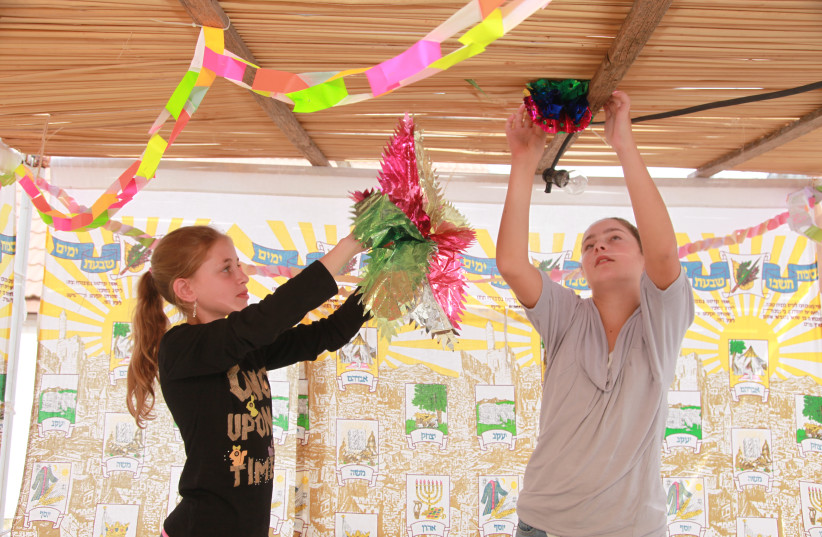The family institution is designed to provide a sheath of emotional support, offer a framework for child-rearing and intergenerational continuity, and ensuring the preservation of group traditions and values. Despite the strength of the Israeli family, in recent years it has experienced changes that are weakening its social and cultural roles. Concurrently, family patterns are becoming more diverse.
Israelis marry later today than they used to. In the past five decades, the Jewish median age at marriage increased from 24 to 27 for men and from 21 to 25 for women. Muslim citizens are following suit: their respective ages grew from 24 to 26 among men and from 19 to 22 among women. Amid this trend, the differences between Jews and non-Jews have contracted, as have the disparities between men and women.
These new family patterns are strongly influenced by general developments in modern society that may operate at different intensities among Jews and non-Jews and within each group according to individual levels of religiousness. These developments include, among other things, a growing tendency to higher education and pursuit of professional career, weakening of social pressure to marry young, erosion of the economic wealth of young men and women, cohabitation living arrangements outside formal marriage, expanded contraception use and prolongation of women’s fertile period.
Further, a growing share of Israelis chooses not to marry at all. While in 1970, only 3% of Jewish men in their late forties never married, today, this is true for 13% – a fourfold increase. Among Jewish women, the respective rates are 2% and 11%, up fivefold. Although these people may eventually find partners, their new families are unlikely to have their own biological children.
Concurrently, family stability is losing ground. The divorce rate is on the rise: from 5% to 12% among Jews in the past 50 years, up two and a half times. If in the past the family rested on three strong pillars – religious values, economic considerations, and emotional support – the intensification of secularism and women’s aspiration to earn an independent living have cost the first two much of their significance, weakening couples’ motivation to preserve their relationship in the long run.

The postponement of age at marriage, the increase in the rate of never-married people and the accelerating tendency to divorce have not affected Jewish fertility. Jewish women in Israel have three children on average, exceeding the norm in other developed countries and, equally important, far beyond the intergenerational replacement level, thus ensuring population growth and a young age composition.
While the average fertility rate among Jews has always been around three children, that of non-Jews was once much higher: five children among Christian women, seven among Druze and nine among Muslims. Recently, however, these rates have come down.
Fertility among Jews
NON-JEWISH women converged to the fertility levels of their Jewish counterparts, and Christian and Druze women exhibit even lower fertility at two children. Nevertheless, because of the high fertility in the past, the non-Jewish population has a young age structure and, accordingly, a large absolute number of young families and children.
Fertility among Jews varies significantly by religious affiliation. While secular women have about two children, traditional women have nearly three, religious women four, and haredi (ultra-Orthodox) women as many as seven on average. Even if a small proportion of children raised in religious and ultra-Orthodox families leave these lifestyles as they grow up, the substantial differences between them and the secular sector remain in effect and are paramount in the changing identity portrait of the Israeli Jewish population.
Whether they are a cause or an effect of the changes in familial patterns described above, gender gaps in educational and economic attainments have narrowed markedly. In education, women have gained an advantage. Today, women outnumber men in eligibility for a matriculation certificate, meeting the threshold requirements for university admission and holding a post-secondary or academic diploma.
Even if the employment rate of men is higher than that of women, the past two decades have witnessed a narrowing of the gaps by half. Gender differences in income show a similar trend. In view of these observations, it comes as no surprise that women’s subjective satisfaction with their wages has decreased; my interpretation is that they feel that their educational achievements are not properly channeled to financial rewards.
This discrimination in the labor market can be mitigated and even corrected by women’s political power, which has recently been on the increase. The share of women in the Israeli parliament has grown from 7% at around the turn of the 21st century to some 25% in the current Knesset. If women members of the Knesset see gender equality as a common goal irrespective of their party affiliation, then cooperation in this field may take place.
This is the fifth in a series of eight op-ed articles appearing once a month during Israel’s 75th anniversary year.
The writer is a professor and the head of the Division of Jewish Demography at the Institute of Contemporary Jewry at The Hebrew University of Jerusalem, where he also holds the Shlomo Argov Chair in Israel-Diaspora Relations.
